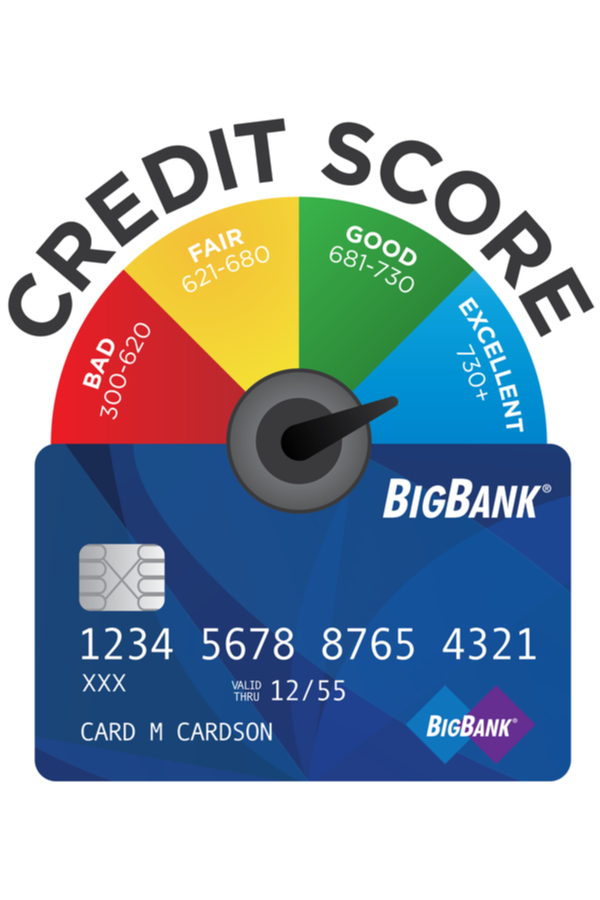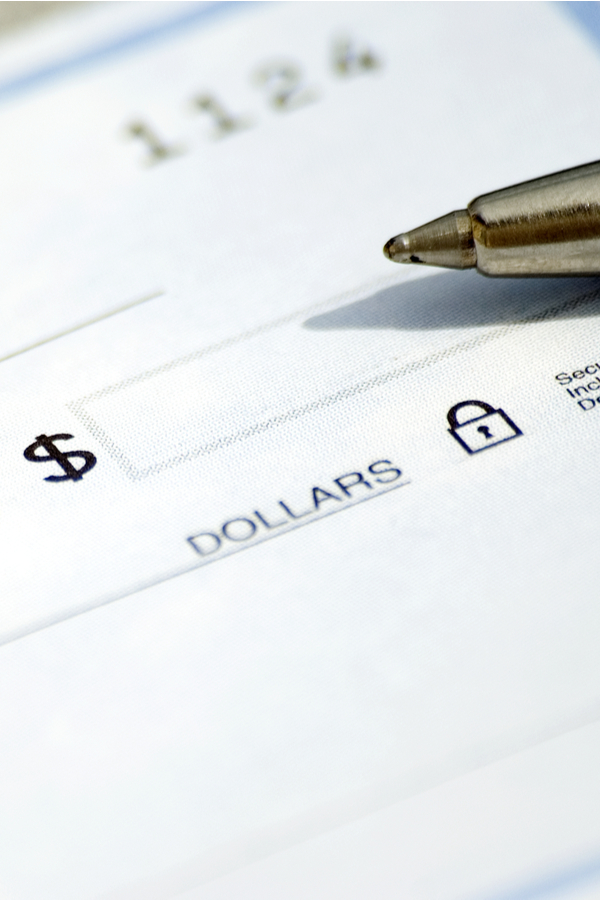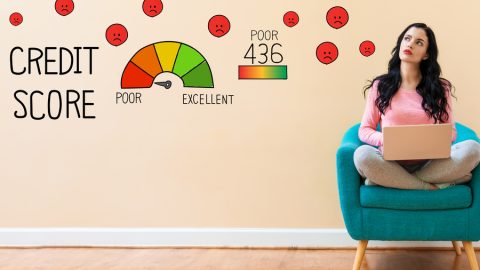When you look at your current credit score do you wish you knew of a way to improve it? Having a good credit card history and overall credit score are both important for a multitude of reasons.
Not only it will allow you to be approved for the best credit cards, but also home loans and car loans with a lower interest rate! It makes a huge difference in your financial future.
However, it can be difficult to overcome poor credit. Most people do not understand what variables go into making up their own personalized credit score.

Furthermore, even fewer people know how to improve their credit if they find out they have a poor score. However, it is easier than you think. With this three step guide you will be able to improve your credit and save money! But first, you must understand how your credit score is determined.
What Makes Up Your Credit Score?
Credit scores can seem like a bit of a black box, that no one really knows how it works. However, with just a little bit of knowledge of what is involved, you will feel more comfortable understanding how this score is determined.
Thanks to an increase in transparency, it is now easier than ever to know what goes into credit scores and how to check your own.
Most lenders use FICO credit scores. This is a standard way of measuring financial credit.
Your credit score includes the following five elements:
- Payment History (35%)
- Credit Usage (30%)
- Age of Credit Account (15%)
- Credit Mix (10%)
- New Credit Inquiries (10%)
These five factors make up your credit score. If you want to improve your credit score then you need to focus on these specific categories.
Upon first glance, it is pretty easy to see that the first two factors make up the largest portion of your credit score. These will be the most important two for you to focus on. If you have a higher ranking in the first two categories, your credit score will quickly rise.
The best part is that these two areas are actually easy to tackle. You can easily control these two variables. So let’s dive in and see how it is done!

1. Watch Your Payment History to Improve Your Credit Score
First, let’s tackle payment history. Payment history is a reflection of how good you are at paying off your debts.
Additionally, this shows that you have the funds to pay off your debt and that you are consistently on top of it.
Companies who lend you money want to know that they are going to get their money back. Make sure you always pay off your debts.
Let’s use a credit card as an example. Every month you receive a credit card statement.
As you purchase goods on your credit card you incur debt that you will have to pay back. In order to improve your payment history, pay off your credit card in full every month.
This is by far the easiest way to improve your credit score.
- Open up a credit card (the Chase Sapphire Preferred is a great one)
- Buy goods on it
- Pay it off every month
- Repeat

The last part is key! Furthermore, the best way to improve your credit score is to pay it off.
Be Smart with Your Credit!
Although you may have heard this, opening up another credit card and incurring more debt is not going to help you improve your credit score. However, if you have the discipline to pay off the one you have you will reap the rewards.
Once you pay off your credit card every month you will watch your credit score rise. It is the easiest trick in the book, but at the same time, traps the most people.
Credit cards can have upwards of 25% interest on your debt. That means if you carry a $100 balance on your credit card and you do not pay it off, the next month you now have a debt of $125.
This can quickly spiral out of control and you must get your hands around it. This is why you should eliminate debt and improve your payment history.
2. Balance Your Credit Usage
Secondly, let’s take a look at credit usage. Credit usage is the portion of your credit score that determines how much credit you actually use.
This is a good indication of how much debt you carry and how much you use your credit. Lenders care about this because they want to know how leveraged you are balancing the two.
For an example on how to improve your credit score by balancing your credit usage, let’s look at a credit card example again.
Say you have a $10,000 credit limit. At the end of the month if you carry a balance of $3,000 on your credit card you will have used 30% of your available credit.
As a rule of thumb, stay under 30% of credit usage. Although maximizing your credit cards can be helpful to rack up points and cash benefits, they can be also dangerous.
Don’t let them entice you to use them to their full capacity. Furthermore, be disciplined to keep your credit usage to no more than that 30% threshold and pay off your credit cards every single month.

If you can, pay them off in full and keep your credit card balance to zero each and every month. This is a simple trick and will pay the biggest benefits.
Not only will get credit card points to use for cash back, travel or even Amazon purchases, but you will also be on the right path to improve your credit score.
3. The Final Step – Get the Small Wins
With the remaining 35% of what makes up your credit score, shoot for the small wins. These 3 categories take time, but when worked in the right way will definitely help you improve your credit rating.
Age of Credit Accounts
15% of your credit score is made up of the age of your credit accounts. Lenders want to know that you are experienced using credit and want to see a long age of your credit accounts. However, you must know how it is calculated.
If you opened up a credit card two years ago and one today, your age of credit account will actually only be one year (the average of all accounts).
This is why it is so important to keep your various credit accounts open if you already have them. Do not cancel old cards, but rather continue to use the history to your benefit.
Use those credit cards to make a small purchase and pay it off each month. You can even pay it off right away if you think you will forget or if money gets tight when the payment deadline hits.
It is important to use those cards, because if they sit unused for a period of time, the credit card company can cancel them for ‘inactive use’. Then, it appears on the credit report that it wasn’t your decision to close the account.
Credit Mix
Credit mix is the combination of different types of credit you have. This could be credit cards, car loans, mortgages, and/or student loans.

Most people have a combination of different debts. Oddly enough, if you pay off your vehicle, you could actually see your credit score drop. This is because lenders want to see multiple sources of credit for each person.
Sounds crazy, doesn’t it? However, it is still best practice to pay off all your debts and keep your credit usage low.
New Credit
Finally, the last 10% of your credit score is made up of new credit inquiries. This is a term used to describe people looking into your credit history.
This could be a new employer, a rental company, or even you looking into your own credit history. Although you have to give consent for those agencies to do a credit check, be aware that some inquiries will decrease your credit score.
However, there are websites such as Credit Karma and banks that allow you to look at your credit score without a credit score penalty. This is a great way to monitor your score and see how the above tactics are helping.
Improve Your Credit Score Today!
In conclusion, improving your credit score does not have to be scary. Put money on a credit card, pay off your monthly credit card bills, don’t cancel old credit cards, and eliminate as much debt as possible.
Follow these steps and you will be on your way to a fantastic credit score. Furthermore, take advantage of the responsible credit card usage and rack up credit card benefits along the way!
Try these simple suggestions and watch your score rise and more doors open to your financial future! It is never too late to start!
Live Simple Now is a lifestyle website dedicated to helping those looking to Live Their Best Life! Feel free to email us at livesimple@livesimplenow.com with comments, questions, article topics or submissions. We publish two articles each week, 52 weeks a year. Sign up today to follow via email, or follow along on Facebook.
